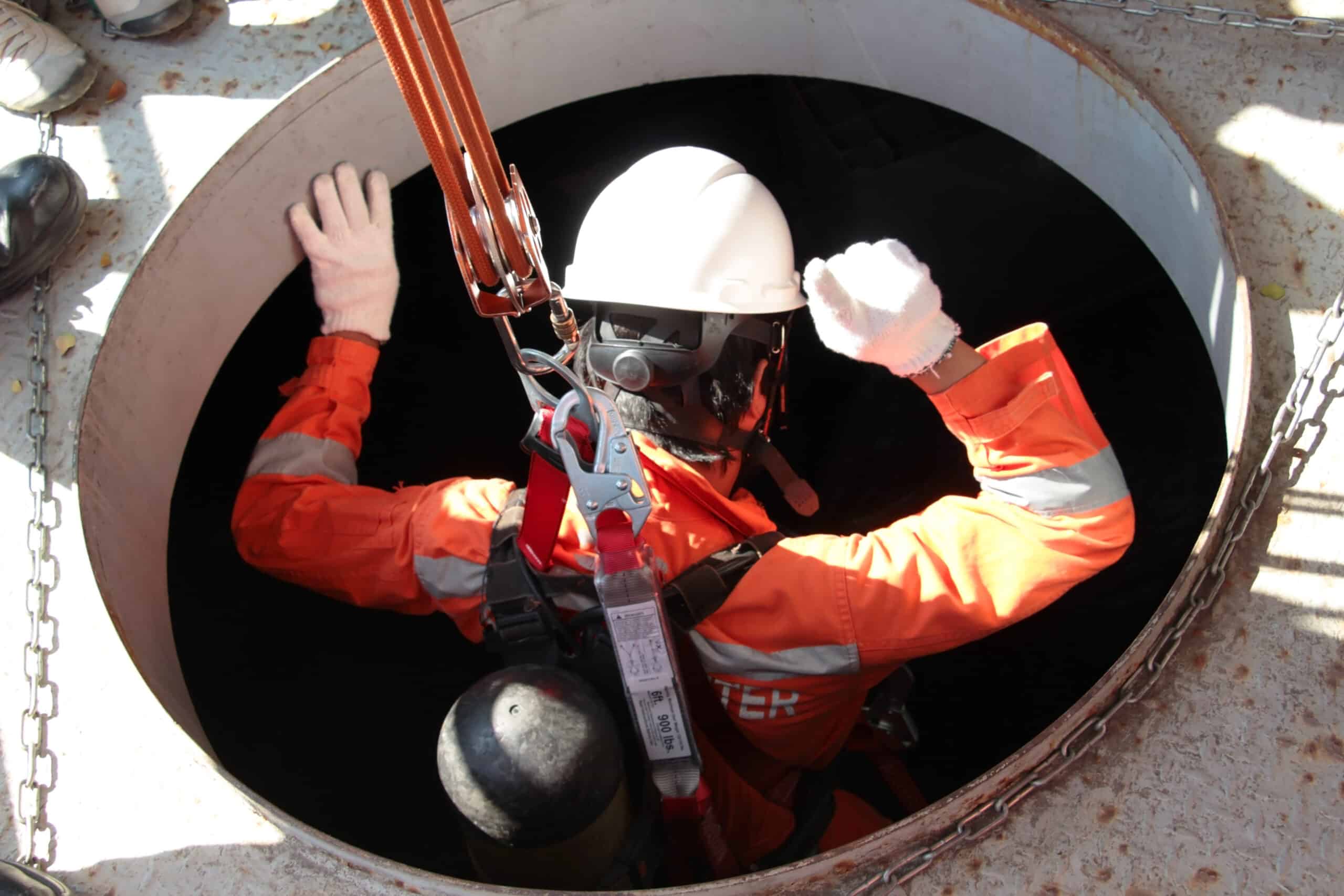
06 Sep The Crucial Role of Confined Space Rescue in Industrial Environments
Part 1: Introduction to Confined Space Rescue
Introduction to the Concept
Confined space rescue refers to the specialized operations aimed at safely retrieving workers trapped within confined spaces. In the realm of industrial settings, understanding and appreciating this concept is paramount. Such operations demand precision, expertise, and a nuanced understanding of the environment at play.
The Inherent Risks of Confined Spaces
In industries, a variety of confined spaces can be identified:
- Tanks
- Silos
- Storage bins
- Manholes
- Pipelines
The nature of these spaces poses potential dangers such as limited access, unpredictable airflow, and the presence of hazardous materials. Without proper precautions, these zones become lethal traps, holding threats like toxic fumes, asphyxiation, or even engulfment.
The Importance of Immediate and Efficient Response
Delayed rescues exacerbate risks, potentially turning recoverable situations into fatal outcomes. It underscores the undeniable importance of specialized training. Properly equipped and trained professionals can make the difference between life and death in these challenging environments.
Part 2: Diving Deeper into Confined Space Rescue
Challenges Faced During Confined Space Rescues
Confined space rescues present a myriad of challenges:
- Physical Challenges: The limited space can hinder movement, making conventional rescue operations infeasible.
- Environmental Challenges: Factors such as lack of oxygen or the presence of harmful gases can jeopardize both the trapped individual and the rescuer.
- Psychological Challenges: Panic and distress can cloud judgment. Both the person trapped and the rescuer must maintain mental fortitude to ensure a successful operation.
Specialized Training Offered by PROS Services
Training for confined spaces is not just an option—it’s imperative. PROS Services champions this notion by offering a tailored training methodology. Some highlights include:
- Simulation of real-life scenarios for hands-on experience.
- Emphasis on team coordination and communication.
- Technical mastery over equipment handling and emergency response.
Real-life instances of successful rescues are testament to PROS Services’ exemplary training. Their approach ensures that workers are well-prepared to handle any situation that arises.
Equipment Essentials for Confined Space Rescue
Rescue operations in confined spaces demand specialized equipment, a deviation from standard rescue tools. PROS Services showcases a range of such instruments:
- Breathing apparatuses tailored for confined spaces.
- Non-sparking tools to prevent ignition in volatile atmospheres.
- Advanced communication devices for seamless coordination.
The advent of technology and innovation plays a significant role in augmenting these operations, ensuring that the rescuers are equipped with the best tools to handle the challenge.
Legal and Regulatory Aspects
Industries are bound by stringent legal requirements concerning confined space rescue. It’s imperative for companies to be compliant, prioritizing worker safety over everything. Non-compliance not only endangers lives but also incurs severe legal ramifications and reputation damage.
Prevention: A Proactive Approach to Safety
Safety is best approached proactively. Regular safety audits and drills are crucial:
- Identify potential hazards early.
- Ensure workers are familiar with emergency protocols.
Choosing a proactive stance over a reactive one can be the difference between prevention and disaster. PROS Services not only offers rescue solutions but also advises industries on maintaining optimal safety standards.
FAQs (Based on ‘People also ask’ section)
- Q1: What is considered a confined space?
- Any space with limited access and egress, not intended for continuous occupancy, posing significant risk due to its environment or materials contained.
- Q2: Why is confined space dangerous?
- Hazards such as lack of oxygen, toxic gases, engulfment risks, and limited movement make confined spaces inherently dangerous.
- Q3: What is the primary hazard associated with confined spaces?
- Asphyxiation due to oxygen deficiency or toxic atmosphere is a primary concern.
- Q4: How can industries prepare better for confined space incidents?
- Regular training, safety audits, investing in appropriate equipment, and fostering a proactive safety culture are paramount.
This comprehensive dive into confined space rescue showcases the importance of preparedness, the right equipment, and a proactive approach to safety in industrial settings.
Stay Prepared, Stay Safe: In the demanding world of industrial settings, the challenges of confined space rescue cannot be understated. Harnessing the expertise of specialized training and utilizing the right equipment can be the difference between life and death. With over six decades of unparalleled experience, PROS Services has been the gold standard for confined space rescue in Southeast Michigan since 1954. Don’t leave safety to chance; choose the proven experts at PROS Services. Ensure safety with the best. Reach out to PROS Services today for all your confined space rescue needs.

